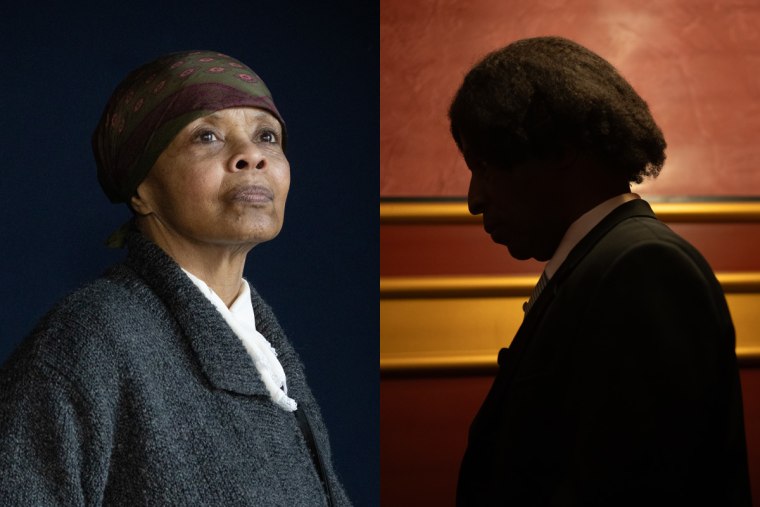WASHINGTON — It’s a bright, balmy February day, and a young man dressed in Civil War regalia cuts a dashing figure while striding down U Street, the historic epicenter of Black arts, culture and heritage in the nation’s capital.
Marquett Milton is clad in a replica of a Union Army uniform, complete with a navy wool sack coat, light-blue pants and a kepi cap covering his locs. While his 19th-century attire elicits a few quizzical looks from passersby, it’s clear from Milton’s swagger that he is proud.
He is among a cadre of interpreters and re-enactors across the country — some professionals, others amateurs — who are illuminating people, places and events from the past through a Black lens. At a time when the country is witnessing attempts at erasing entire chapters of American history — whether banning books or deploying revisionist history — these individuals are seeking to embody narratives in a literal way.
“I love talking about history,” said Milton, a staffer at the African American Civil War Museum in Washington, D.C., dedicated to the more than 200,000 United States Colored Troops (USCT) who served the Union Army and Navy during the Civil War, many of them sacrificing their lives to unite the country after 11 Southern states seceded over slavery.
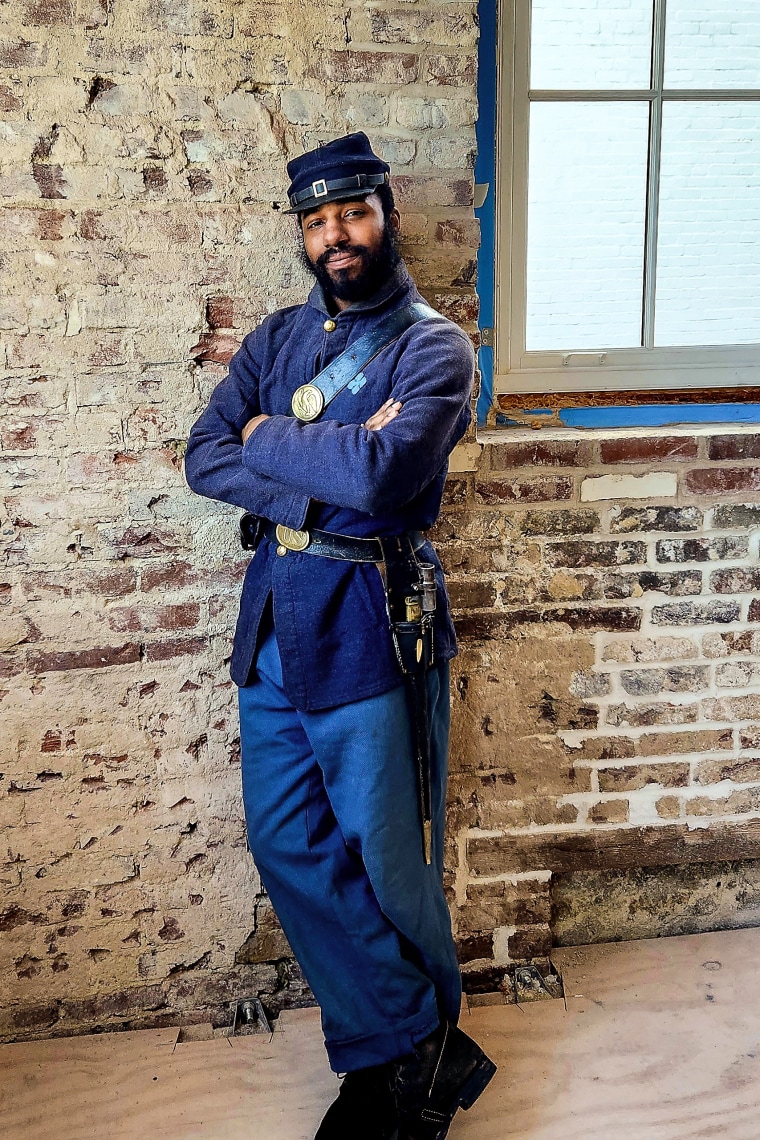
“I first learned about these heroes when my high school teacher showed our class the film ‘Glory,’” the 32-year-old recalled. “After that, I tried to learn all I could. And now I’m educating others.”
Typically, Milton spends his workday in uniform, giving presentations to school kids and tourists about the USCT. While in character, he highlights the valor of such men as Corporal Andrew Green, who enlisted after gaining freedom under Washington, D.C.’s 1862 Compensated Emancipation Act.
Along with Milton’s presentations, the museum is home to other personal histories, artifacts and documents, drawing nearly a quarter of a million visitors annually, said Frank Smith, Jr., founding director of the African American Civil War Memorial Freedom Foundation. The space is currently undergoing an $8 million renovation, but when it reopens (scheduled for October 2024), visitors will be able to take in several new exhibits and conduct research into whether their own relatives served in the war.
“At a time when America is debating the great values of democracy, it could not be a better time to fully understand the importance of the U.S. Colored Troops,” Smith said. “They sought freedom, and in doing so, helped to unite a divided country.”
With the museum temporarily closed, Milton spends his days across the street at the African American Civil War Memorial, the museum’s sister site. A gleaming 9-foot bronze statue by artist Ed Hamilton, “The Spirit of Freedom,” depicts USCT soldiers and sailors. It’s encircled by a Wall of Honor that lists all 209,145 troops and their regiments.
Here, Milton encounters tourists and locals alike, fielding questions and snapping photos. He relishes his role as an interpreter of history.
“These are American heroes, this is American history,” he said. “I’m happy that I get to share it.”
About 80 miles to the east of Washington is the small town of Easton, a picturesque seaside community founded in 1790 on Maryland’s Eastern Shore. Inside the Avalon Theatre, a historic venue that’s been beautifully restored to its art deco grandeur, live jazz fills the air as folks settle into their seats.
The occasion is the birthday celebration for Frederick Augustus Washington Bailey, better known as Frederick Douglass. He was born in Talbot County, Maryland, circa 1818.
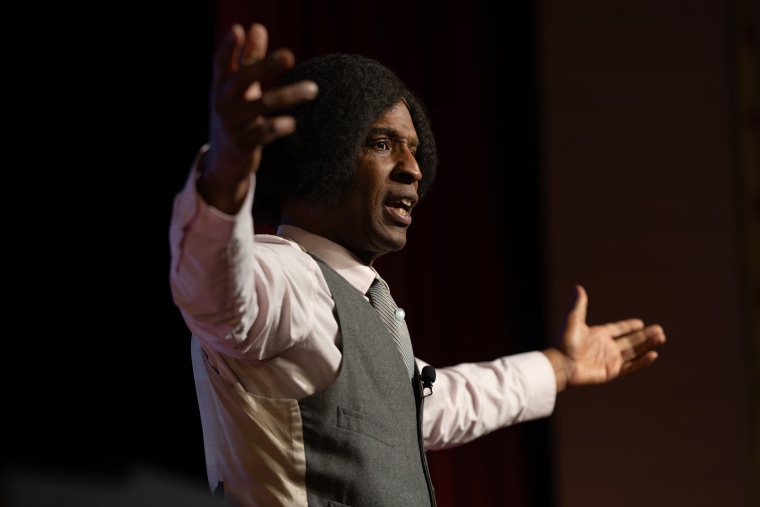
As the house lights come up, illuminating a colorful mural of Douglass and his first wife, Anna Murray Douglass, an elegantly dressed gentleman with a halo of hair enters the stage. In a booming voice, he begins to sing a spiritual: “Go down Moses, way down in Egypt land. Tell old Pharaoh, to let my people go ...”
Actor and writer Darius Wallace has appeared on plenty of TV shows and Hollywood films. Yet on this day, he is channeling the very heart and soul of Douglass, who made a bold plan to escape slavery and went on to become a globally recognized abolitionist and American statesman.
Wallace’s one-man show, “Frederick Douglass: Lion of Thunder,” dramatizes his miraculous life journey, reciting snippets of the famed orator’s speeches along the way. In the harrowing monologue, he also captures the sorrow of young “Freddie” and his grandmother after she walked him miles to a neighboring plantation. The small boy wept upon her furtive departure, never to see her again.
“I try to find the humanity in my characters,” he said in an interview. “And finding pieces of myself in them. It’s a very intimate process.”
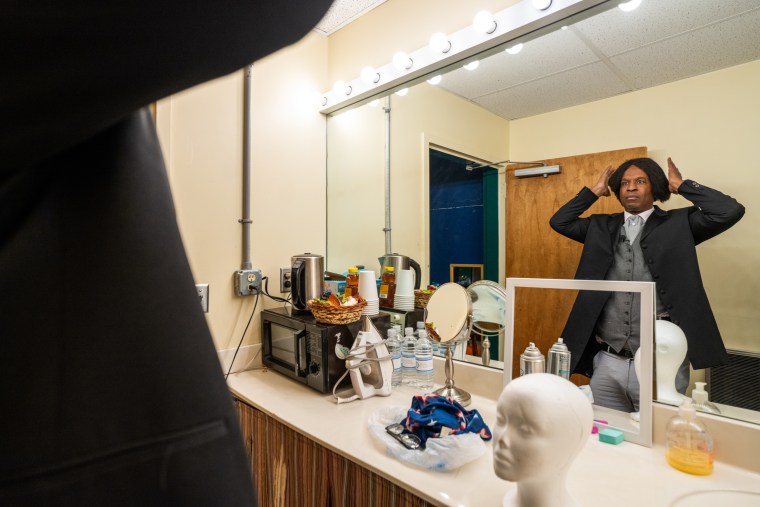
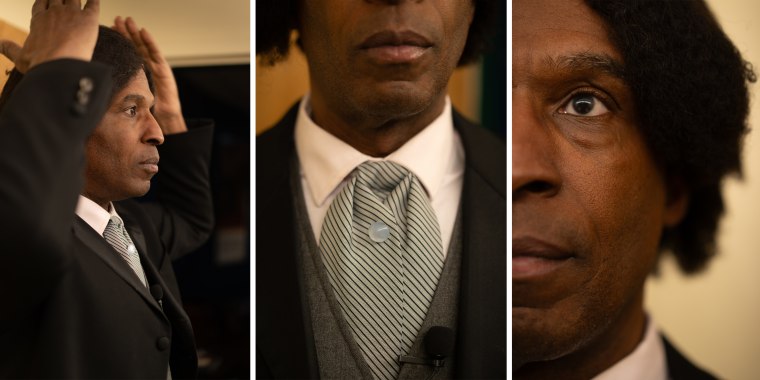
While the Atlanta-based actor has been invited to portray Douglass around the country, Wallace has several figures in his repertoire, including Martin Luther King Jr. and Malcolm X. “I do research and study video to help me capture them.”
When he concluded his Douglass piece, the applause from the multiracial, multigenerational audience was resounding. In the crowd were elected officials, clergy and community members, as well as descendants such as Tarence Bailey, the fifth great-grandson of Perry Bailey, Douglass’ eldest sibling.
“We are trying to preserve the legacy for future generations,” said Bailey, who serves as president and founder of the Bailey-Groče Family Foundation, Inc., one of two Frederick Douglass family-run organizations in the country.
Kevin Douglass Greene, Douglass’ great-great-grandson, traveled from Tennessee.
“He penned his own story,” he said of his ancestor. “He was able to influence America and the world, both policy and history. He taught us many lessons,” he added, among them that “the cause of freedom has no color.”
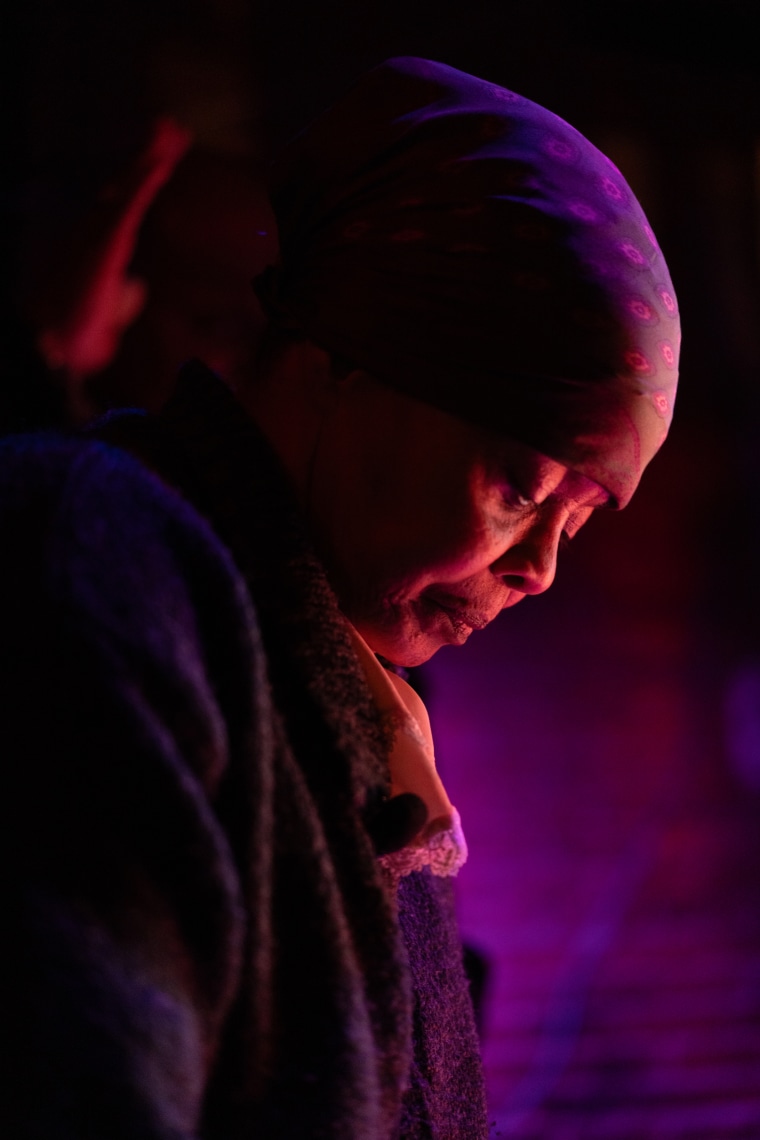
Earlier that day, wearing a long full skirt and a white high-neck blouse, her hair tied up in a kerchief, Millicent Sparks slowly walked out on stage. The spirit of Harriet Tubman seemed to envelop the theater.
Speaking in dialect punctuated by hymns, the Philadelphia-based thespian morphed into the Maryland-born abolitionist and Underground Railroad “conductor,” who “never ran my train off the track. I ain’t never lose a passenger.”
At turns mournful, at other times witty, Sparks captured the essence of the freedom fighter, Civil War military leader and suffragist, who like Douglass also began life enslaved on Maryland’s Eastern Shore and died as a free woman in upstate New York.
Sparks, an actress, writer and producer who appeared in the film “Beloved” and has graced stages across the globe, has brought “The Harriet Tubman Living History Experience” to schools and colleges, churches, senior centers, women’s shelters, correctional facilities, museums, national parks and corporate events.
While she has also portrayed activist Rosa Parks and entertainer Billie Holiday, just don’t call her a re-enactor. “I am a living-history performer,” she smiled, before the program began.
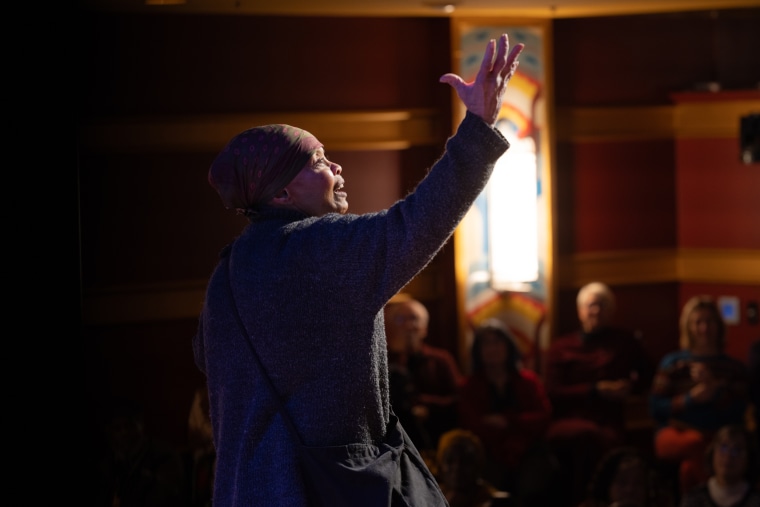
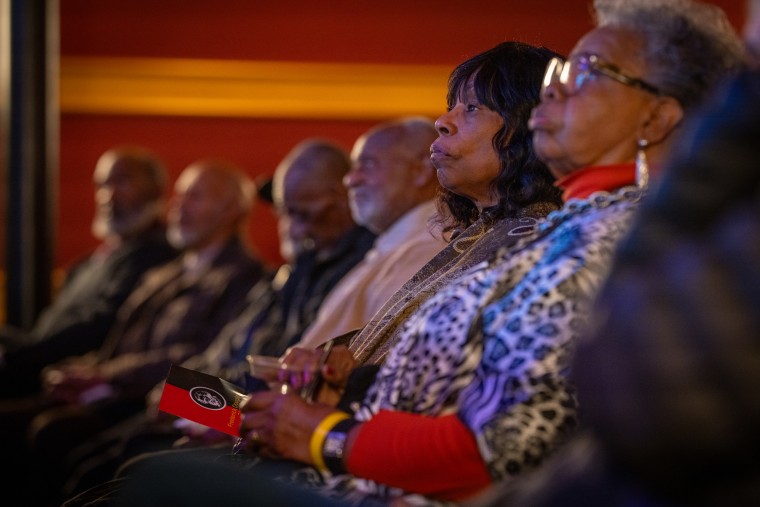
While historical re-enactments are nothing new, for a variety of reasons Black women have not been as well represented in this space. Yet that is changing. Back in Washington, the African American Civil War Museum has a volunteer auxiliary group called Female RE-Enactors of Distinction (FREED).
“Beyond the heroic Black men in the U.S. Colored Troops, heroic Black women were there too,” said Dawn Chitty, the museum’s director of education. The most well-known is Harriet Tubman, she said, but others were “nurses and cooks.”
FREED’s mission “is to educate the public and promote the accomplishments of the African American Civil War soldiers and the women who supported their fight for freedom. They engage in re-enactments, dramatic readings and other educational endeavors, wearing ornate period dresses, bonnets and clothing of the era.
Co-founder Patricia Tyson said that when members made their debut in 2005, it caused a stir. “The public had never witnessed such a scene. Some thought our ancestors only worked in the fields in rags and wished for a brighter day.”

FREED member Joyce Bailey is a descendant of Sgt. Alexander Kindle of the 54th U.S. Colored Infantry of Arkansas. She portrays Elizabeth Keckley, a pioneering Black dressmaker for first lady Mary Todd Lincoln and other well-to-do women. Thanks to Keckley’s talents, she was able to purchase her freedom and her son’s.
“I’ve been a re-enactor for at least 20 years,” said Bailey, a retired educator. “I do it because I feel it’s important, especially for young people, to understand history that rarely has been presented accurately.”
All of the interpreters and performers inform themselves with scholarly literature. And professionals like Sparks strive to infuse their characters with emotional depth. “I want to show her deep spirituality, intelligence, dignity and courage,” she said of Tubman.
“She demonstrated an unyielding and fearless resolve to obtain liberty and social justice for herself and others.” What an “honor,” she said, it is to bring this American heroine to life.
For more from NBC BLK, sign up for our weekly newsletter.
